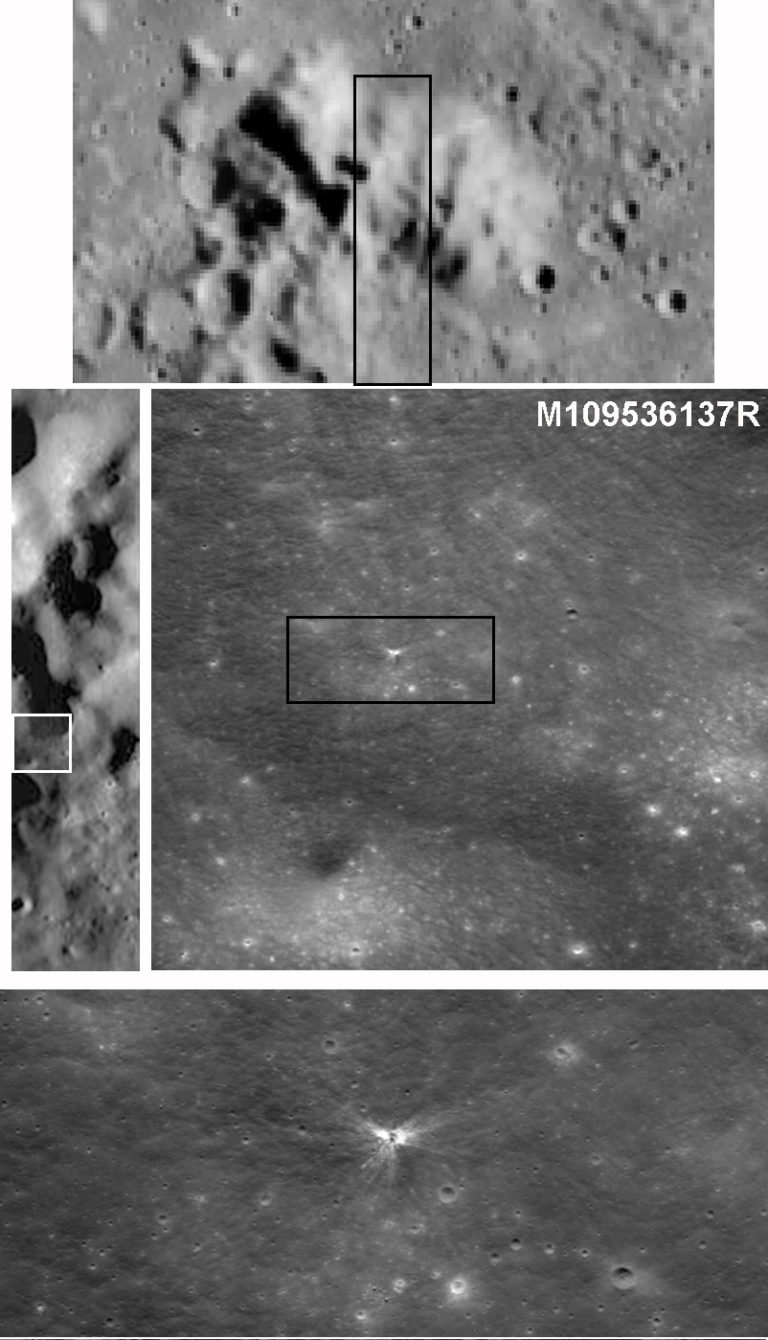Emily Lakdawalla • Jun 15, 2010
Is this SMART-1's impact site?
Speaking of spacecraft crashing...I was reading the May 2010 issue of Icarus and came across a paper tersely titled "The SMART-1 lunar impact," by M.J. Burchell, R. Robin-Williams, and B.H. Foing. It was an interesting paper because there wasn't a lot of data available. The SMART-1 team knew exactly when and approximately where the spacecraft hit, and they saw a weak flash from Earth. But they have not been able to locate an impact crater on the Moon. This is not too surprising, since it was such a small spacecraft and hit the ground at such a shallow angle (only 1 degree), so the paper goes into great detail on theoretical models of what the crater should look like.

Well, it may be possible that Phil Stooke has found the real thing in recent Lunar Reconnaissance Orbiter images (which would not have been available before the Icarus article went to print). But I emphasize "maybe." The thing that makes this impact site hard to locate also makes it very hard to be certain that Phil's found the real thing; it could just be another relatively recent low-angle impact of a low-mass object. Still, it'd be worth a long look by the authors of that paper! If it's the right thing, then, Phil says, SMART-1's crash didn't end with an impact into the north slope mountain identified by the mission team; it would have skimmed that peak and came to ground slightly to the south. "I don't know how plausible that is, but I don't see another candidate site yet," he says.

Let’s Go Beyond The Horizon
Every success in space exploration is the result of the community of space enthusiasts, like you, who believe it is important. You can help usher in the next great era of space exploration with your gift today.
Donate Today

 Explore Worlds
Explore Worlds Find Life
Find Life Defend Earth
Defend Earth

